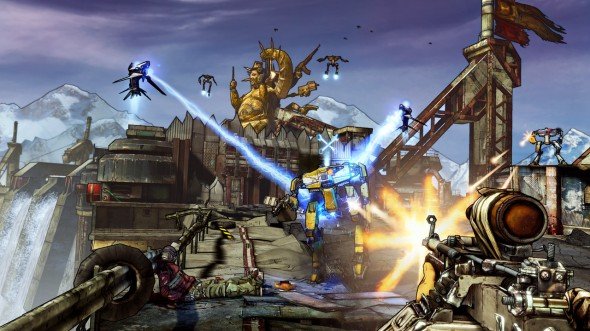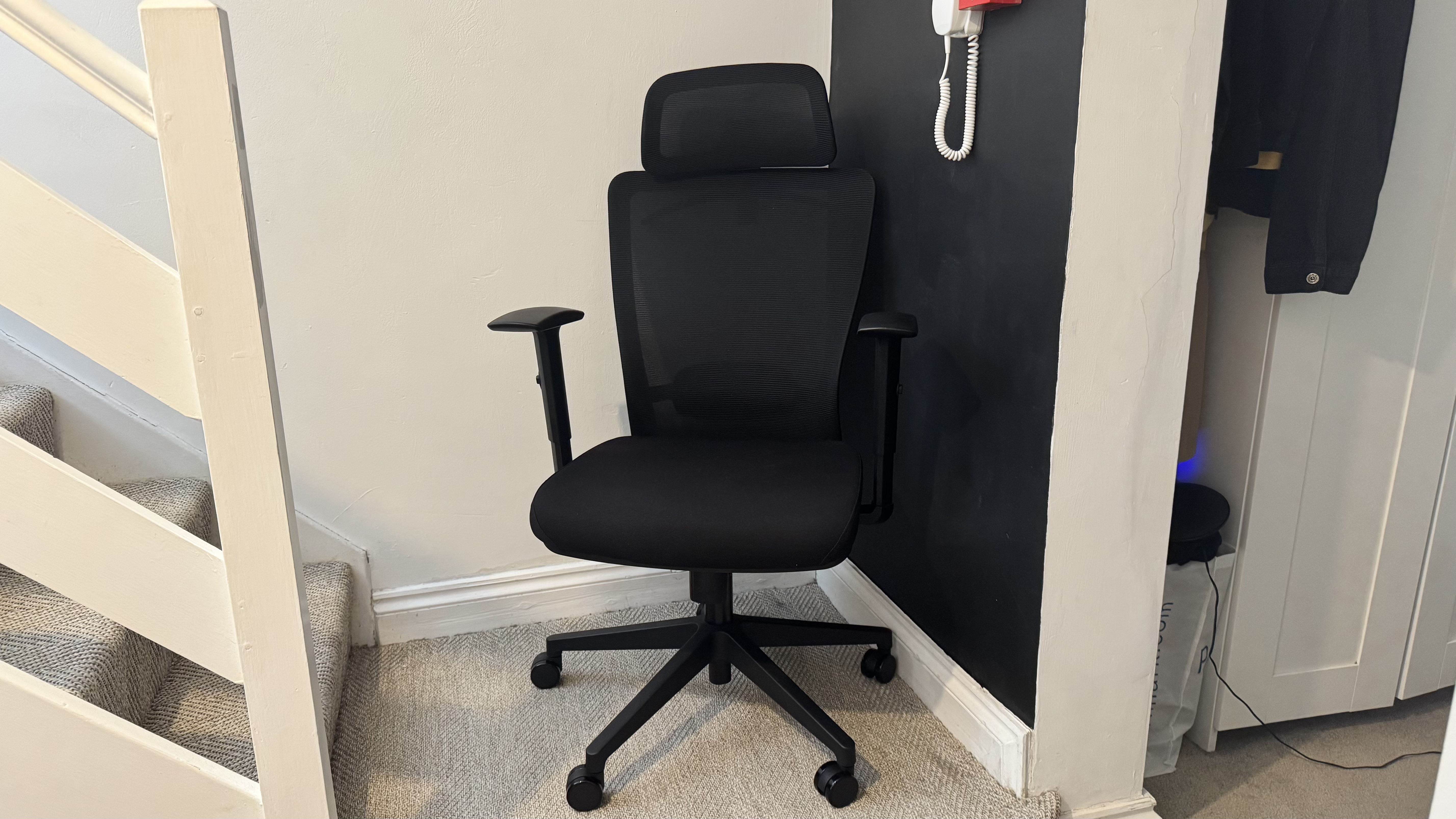Borderlands 2 preview

Gearbox's Steve Gibson sounds suspiciously like his game's mono-wheeled robot mascot, Claptrap, as he explains Borderlands 2's support for PC gamers. “We love the PC players. They're not an afterthought. The PC has a lot of distinct advantages.” Now I think about it, I've never seen them both in the same room. Take from that what you will.
I didn't get to fiddle with the PC's promised extra features during my hour and a half playthrough. But I did get to galumph around a Pandora pitched five years later than the colony planet in the original Borderlands with a friend. We both took to two of Borderlands 2's four new classes quickly. I chose the Siren, gaining the ability to freeze a single enemy in place, suspended above the battle raging below by a wibbly magic orb. He chose the Gunzerker: a luxuriously-bearded man standing a full five feet tall, possessing the ability to sometimes wield two of the game's ridiculously designed weapons at the same time. He's short man syndrome personified.
Borderlands 2's other two classes – the turret-spewing Commando and the mysterious, masked Assassin – weren't available to us. Despite the clear analogues between the first and second games' classes – the Commando as the Soldier, the Gunzerker as the Berserker – there's a distinct difference in the way they fight. The Siren I chose to command, Maya, is part of the same group of alien-augmented fighters as the first game's Lilith, but felt like less of a direct damager than she did. Rather, her phase bubble gave her something more familiar to RPG fans than FPS players: a crowd control move.

The game's tech trees are presented as before: three threes down which players can slot points in to to make their special abilities even more special. For my Siren, I made her phase move into a healing spell: whenever an enemy died inside the bubble, they would cough up a handful of life-restoring pickups, restoring both myself and my co-op partners. The Gunzerker can tune his skills towards tanking, taking more damage and distracting more foes, or to dishing out maximum damage, making his dual-wielded weapons more powerful.
Steve Gibson's convinced the second Borderlands will be more of an RPG than its older relative. Class interplay, he says, is important. This is reflected in the new weapon type. 'Slag' acts as corrosive, electric, or fire weapons do, adding an extra value to a gun on top of its base damage. Slagged enemies are weaker to shots from other weapons, making it sensible to steam into battle with one of the new guns, before switching up to a second firearm and reaping the rewards of your earlier debuff. Not that you'll need too much incentive to swap guns: Borderlands 2 has a similarly sized arsenal to the first title, meaning each copy of the game has more potential guns than there are people on Earth.
Actually slugging foes with said weapons feels better than before. Borderlands combat, for all its gun-ular variety, had a tendency to feel flat, like pointing a colourful hose at a target. Borderlands 2's weapons hit with physicality, knocking enemies back and staggering them as they make their assaults. Gearbox are shooting (hah! Ahem.) for a more tactical combat experience, too: robots can be knocked out of action with a steady stream of shells to the robo-gut, or picked apart at weakened joints from a distance with well-placed shots.
Borderlands 2 is no great departure from Borderlands. Gearbox are doing what the game's weapons do: adding exciting tweaks to a template that worked perfectly well in the first place. As with those weapons, it's still just as fun to pull the trigger.
Keep up to date with the most important stories and the best deals, as picked by the PC Gamer team.

